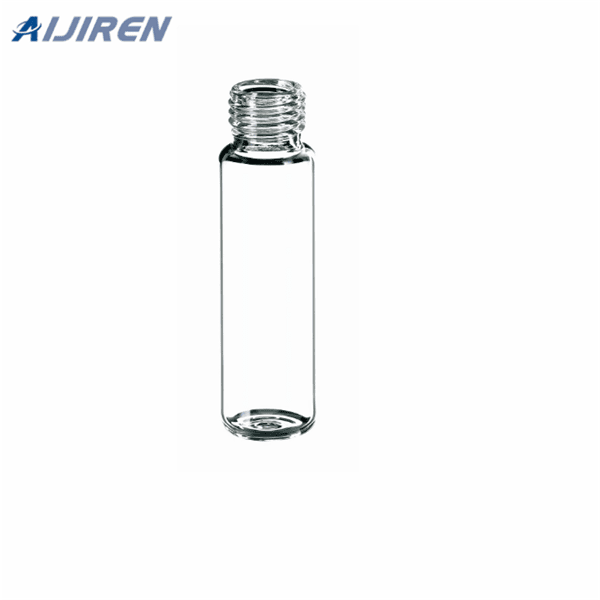.jpg)
Glass Vials Lab 8-425 neck finish represents a hplc vials &gc vials the vials a diameter of 8 mm across the outside of the threads and a thread style of 425, Vials has clear and amber, Screw Cap in Lab most of the 2ml vials are 12*32mm Autosampler Hplc Vials &gc vials are available in a variety of neck finishes and opening diameters. 1.5mL 8
.png)
Jan 1, 2007 · The fundamental extraction process to extract analytes from a sample in a sealed vial for HPLC analysis is 8 HPLC SAMPLE PREPARATION 259 Plunger i • Barrel Z.Stot Hub.Viewing Win6ow Adjustable Depth Gauge a~ Needte Fibre Attachment ubin~ oate Fus~ Siiica Fibre FIGURE 8 Schematic of commercial SPME device: (a) expanded view of the nee- dle and
.jpg)
• Ideally the sample solvent will not affect chromatographic separation • If a stronger sample solvent is required, injection volumes should be kept to a minimum • In a strong solvent, the sample moves more quickly through the mobile phase and often split or distorted peak shapes are observed as in chromatogram A
.jpg)
It is important to keep in mind that changing injection volume, in general, would affect the peak (height, volume, and width) dependent on: the dimensions of the column (length and diameter), packing particle size and type (fully porous, superficially porous, or monolithic material as well as its surface area, functionalization density, chromato
.png)
Capillary HPLC is a specialized form of LC employed with reduced diameter columns to improve sensitivity by reducing on-column sample dilution. Cap LC does not require large sample amounts and may be qualitative and quantitative, often employing mass spec as a detector.

Aug 20, 2020 · Multiple injections are needed to reach a steady state where the active sites have been filled with the surrogate protein, so that when the sample of interest is injected the peak area and analyte recovery are consistent between runs [2]. Beyond HPLC . Using containers and flow paths with inert surfaces can help to mitigate binding of biomolecules.
.png)
3.2: High Performance Liquid chromatography. High-performance liquid chromatography (HPLC) is a technique in analytical chemistry used to separate the components in a mixture, and to identify and quantify each component. It was initially discovered as an analytical technique in the early twentieth century and was first used to separate colored
.jpg)
May 10, 2022 · Solution stability of analytes plays an important part in qualitative analysis, especially in conducting accurate, quantitative analyses. Sample diluents and glass vials as sample containers for HPLC analyses can play a critical role and should be evaluated during chromatographic method development.
.jpg)
Fill a vial with the appropriate volume and label the vial. 3. Prepare the Tea Sample. a. Pipette 10 mL of tea into a clean and Dry 50 mL volumetric flask and dilute to the mark with HPLC/CE grade water. b. Filter the sample using the provided filter. c. Rinse the filter by filtering the first 1-2mL of the sample into the waste beaker. d.
.jpg)
Nov 28, 2022 · A complete dispersion and disruption of sample in small sized particles is obtained in MSPD, which later provides a better surface for the extraction of the sample. In basic SPE methods, sample disruption is achieved in earlier steps because the sample should be in liquid form, and thus several components are discarded before the extraction.
.jpg)
• HPLC methods should first work towards focusing the sample on the head of the column, and then minimizing sample dispersion through the column. • Incorporating simple injector programming in the method can minimize extra-column volume to improve peak shape and efficiency, especially for fast LC separations. Trouble: All Peaks are Broad 1.
.jpg)
Oct 11, 2018 · Dr. Andreas Otto, product manager at Aijiren Technologies (Santa Clara, CA), notes that poor HPLC maintenance can lead to contaminated or spoiled solvents. “Leaving HPLC capillaries filled with water for long periods can promote algae growth, which may lead to system clogging or sample- independent effects, which are observed as carryover.”.
.jpg)
High-performance liquid chromatography (HPLC) is a broad analytical chemistry technique used to separate compounds in a chemical mixture. These separations utilize the pressure-driven flow of a mobile phase through a column packed with a stationary phase. The mobile phase carries a liquid sample through the column to the detector, and compounds
.jpg)
Aug 1, 2019 · autosamplers operate with the sampling needle as part of. the sample loop. It has two major instrumental setups—. with the metering device as part of the high-pressure flow. path (Figure 4a) or
.jpg)
Part Number: 186000846C. Waters Certified vials are tested for cleanliness by HPLC and held to tightest dimensional tolerances in the industry. LC GC Amber Glass 12 x 32mm Screw Neck Vial, with Cap and PTFE Septum, 2 mL Volume, 100/pkg. Part Number: 186000846C. ----.